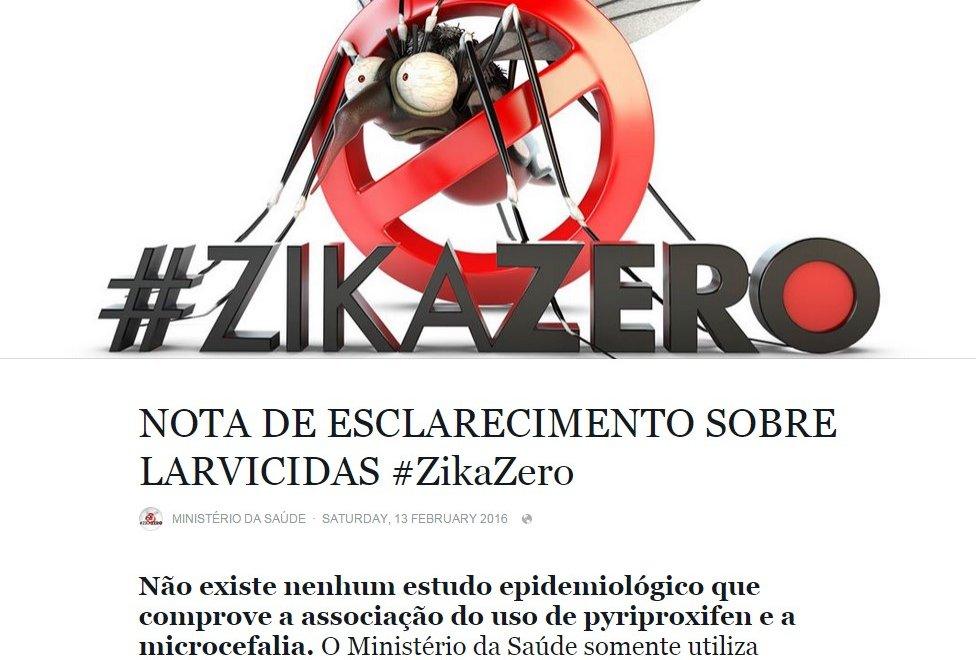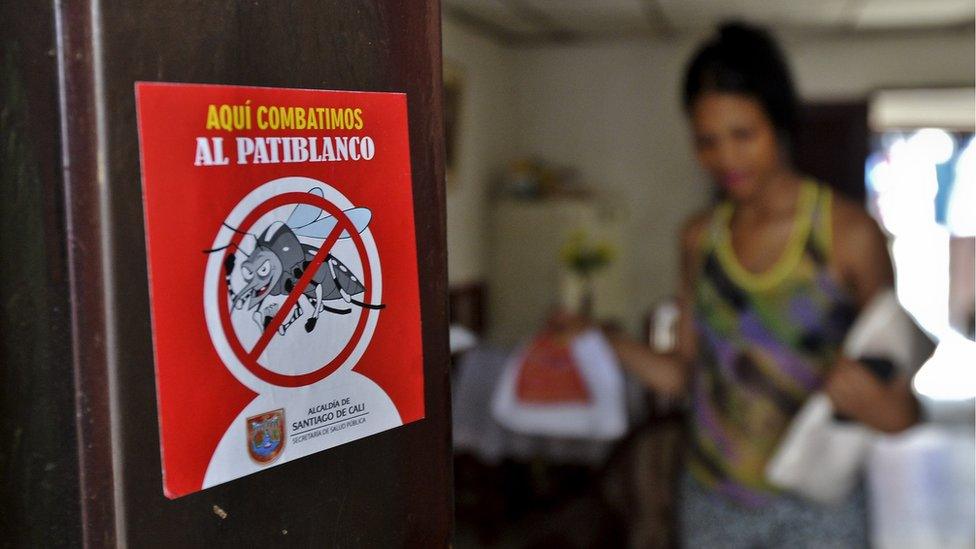Zika virus: Rumours and theories fuel 'information war'
- Published

Many Brazilians do not believe microcephaly is caused by the Zika virus
As scientists race for answers about the Zika virus and its links to neurological disorders, rumours are filling the vacuum.
Genetically modified (GM) mosquitoes, expired vaccines and more recently, the use of larvicide to stop mosquitoes from breeding, have all been blamed.
Posts on social media expressing these theories have been widely shared - although rarely by respected scientists.
And Brazil's health authorities have been caught off guard, describing the frenzy as a "real information war" with a "complex scenario of actors, interests and worldviews".
Would it be wrong to eradicate mosquitoes?
Now they are pushing back, which experts say is a "key part" of managing any outbreak.
"This happens everywhere each time there is an epidemic of some sort", says Professor Jimmy Whitworth from the London School of Hygiene and Tropical Medicine.

Brazil's health authorities said they were engaged in a "real information war" with a "complex scenario of actors, interests and worldviews"
"At the moment, there is nothing in any of the rumours about insecticides, larvicides, vaccines and GM mosquitoes that seems at all persuasive. The spatial and temporal fit is poor between cases of microcephaly and the use of any of these technologies."
Spreading rapidly
But the Brazilian authorities were unable to prevent a rumour pointing the finger at the larvicide pyriproxyfen from gaining traction online.
The theory grew in popularity after doctors from the Argentine group Physicians in the Crop-Sprayed Villages, which campaigns against GM crops and the use of pesticides, published a report linking the larvicide with microcephaly.
The report said the product was first introduced in Brazil's northeast in 2014, a year before the increase in microcephaly, and also claimed the Brazilian Association of Public Health (Abrasco) was aware of this link.

Larvicide being used to kill mosquitoes in Rio de Janeiro
The Argentine group argued that Zika has not caused birth defects in other countries and says there are no records of microcephaly in the current Zika epidemic in Colombia.
This ignores an increase in microcephaly in French Polynesia after a Zika surge between 2013 and 2014 and also overlooks the fact that the epidemic in Colombia is still recent. Although more than 3,000 pregnant women there have been infected by Zika, only a few of them have given birth.
But the Brazilian government was on the back foot.
Abrasco was forced to deny it had linked pesticides, larvicides or any other chemical products to the rise in microcephaly.

Brazil's Ministry of Health used Facebook to tell citizens that larvicide was not a risk
Meanwhile Brazil's Ministry of Health attempted to reassure people by saying pyriproxyfen had been approved by the World Health Organisation (WHO) as well as Brazil's health surveillance agency Anvisa.
Even so, two Brazilian states - Rio Grande do Sul in the south and Para in the north - temporarily banned its use in drinking water, saying they wanted to avoid any risks while further studies were carried out.
A third factor
But in the worst-affected state, Pernambuco, the facts do not support the larvicide theory.
Some areas where pyriproxyfen is used do not have any cases of microcephaly while the city of Recife, which has most cases, does not use it, officials at the state's centre for disease control said.
And doctors say the alterations seen in the babies' CT scans suggest that the lesions were caused by a congenital infection, and not by pesticides, drugs or vaccines.
But researchers are looking for a "third factor" involved in causing microcephaly in addition to the Zika virus.

Those who blame larvicide claim there have been no cases of microcephaly in Colombia
Carlos Brito, a researcher with the Oswaldo Cruz Foundation in Pernambuco, says most pregnant women who have Zika have normal babies.
"We need to know: does it depend on the stage of pregnancy when the mother is infected? Does it have to do with their immune system? Might there be socioeconomic factors as well, maybe the state of nutrition of the mothers?" he said.
But as the wait for answers continues, the rumours multiply.
"They raise an uproar. My patients are sending me WhatsApp messages asking what is going on," said Dr Brito.